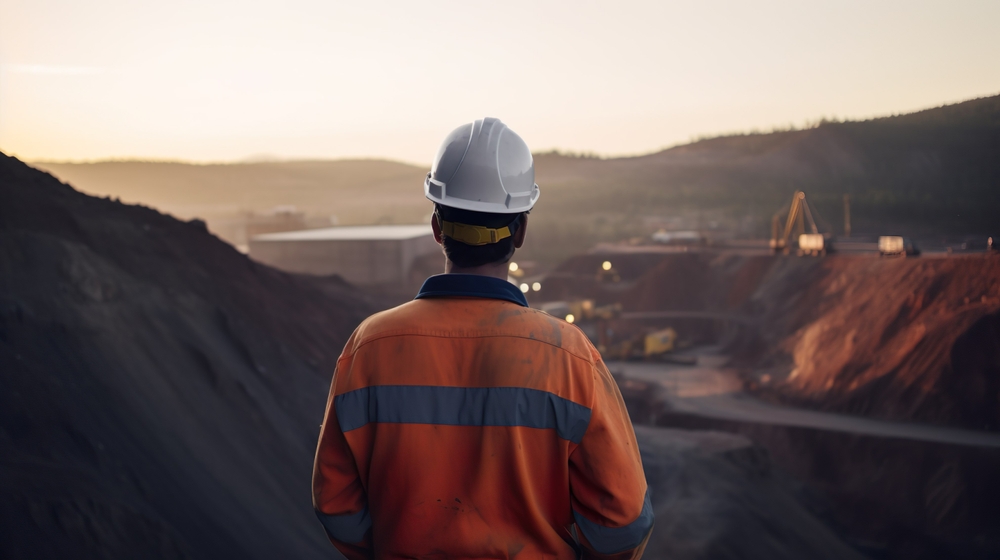Why Workers Should Go Take A Hike
The ability to be outside is a powerful argument for a hybrid workplace. It can improve well-being, as well as productivity, research shows.
I was recently speaking with one of my former students about the decisions that leaders are facing as they bring employees back to the office on a full-time or hybrid basis. This student remarked that one overlooked benefit of working from home is that it gives employees the ability to access the outdoors during the workday.
He described how his remote workdays included moments in which he was able to go into his backyard and enjoy a nature break—something he could never do when he was in the office all the time. He said these outdoor respites left him feeling more refreshed than his indoor breaks.
His observations resonated with me, because they aligned with my own research about the intersection of the worlds of work and nature, and with the compelling evidence that exposure to nature provides myriad benefits to individuals—benefits that don’t stop when the workday begins.
The link to the current discussion about remote and hybrid work is obvious: Employees who hold jobs that are able to be made hybrid—namely office workers—are the same group of workers who often have limited access to nature during their workdays in sealed buildings. Moreover, given that these buildings are often located in urban areas, even when employees are able to get outside, the quality of their exposure to nature is often low, occurring alongside distractions that impede the enjoyment of nature, like traffic noise.
This is where flexible work comes in. When employees work from home, they can open their windows and breathe in fresh air. In between video calls, they can step outside and feel the breeze and hear birds. After lunch, they can take a walk to a nearby park, or work outdoors for a few hours. In short, in ways small and large, working remotely permits deeper immersion in nature compared with being in the office.
And this immersion matters. Contact with nature improves people’s moods, sharpens people’s cognitive abilities, makes them more cooperative, reduces burnout and enhances employees’ productivity. By allowing workers more meaningful access to nature through flexible work schedules, leaders provide employees with a work arrangement that facilitates higher well-being and performance.
These nature-based benefits of flexible work for workers and organizations take on added value considering recent research has shown that exposure to nature outside of work hours can contribute to employee performance when they return to work. In one study, my co-authors and I provided evidence that to the extent that employees spent time outdoors before and after work, they were in better moods when they arrived at work, which fueled higher work effort later in the day. This suggests that contact with nature not only has the potential to enhance employees’ well-being and performance while they work remotely, but to also positively affects their feelings and behaviours when they return to the office.
Companies, of course, could also redesign their in-person workspaces to provide employees with deeper immersion in nature—something many companies are embracing by adding such things as windows that open, green spaces on rooftops, and hiking trails on corporate campuses. But such efforts, while valuable, are expensive. It is much less costly—and quicker—to incorporate remote work into employees’ schedules.
One final benefit of bringing employees into deeper contact with nature relates to organizational sustainability efforts. In particular, there is an emerging link between employees’ contact with nature and their subsequent engagement in sustainability-related behaviours. Research shows that when individuals come into contact with nature in a given week, they are more likely to engage in sustainability-related behaviours that may be in alignment with organizational sustainability goals when they get back indoors.
A couple of caveats are warranted. First, individuals differ in the extent to which they like the outdoors; investments in contact with nature will likely have little effect on employees who feel no connection to the natural world. In addition, however beneficial interactions with nature are, they can’t make up for serious job deficiencies in terms of things like fair pay and respectful treatment. It would ring hollow and backfire to tell overworked employees to simply go outdoors to avoid their impending burnout.
There are no one-size-fits-all answers when it comes to redesigning jobs in a postpandemic era. But when weighing the benefits of hybrid work and other flexible work arrangements, leaders shouldn’t forget part of the answer can be found just outside their doors.
Reprinted by permission of The Wall Street Journal, Copyright 2021 Dow Jones & Company. Inc. All Rights Reserved Worldwide. Original date of publication: July 13, 2022.
 Copyright 2020, Dow Jones & Company, Inc. All Rights Reserved Worldwide. LEARN MORE
Copyright 2020, Dow Jones & Company, Inc. All Rights Reserved Worldwide. LEARN MORE
This stylish family home combines a classic palette and finishes with a flexible floorplan
Just 55 minutes from Sydney, make this your creative getaway located in the majestic Hawkesbury region.
The marketplace has spoken and, at least for now, it’s showing preference for hybrids and plug-in hybrids (PHEVs) over battery electrics. That makes Toyota’s foot dragging on EVs (and full speed ahead on hybrids) look fairly wise, though the timeline along a bumpy road still gets us to full electrification by 2035.
Italian supercar producer Lamborghini, in business since 1963, is also proceeding, incrementally, toward battery power. In an interview, Federico Foschini , Lamborghini’s chief global marketing and sales officer, talked about the new Urus SE plug-in hybrid the company showed at its lounge in New York on Monday.

Lamborghini
The Urus SE SUV will sell for US$258,000 in the U.S. (the company’s biggest market) when it goes on sale internationally in the first quarter of 2025, Foschini says.
“We’re using the contribution from the electric motor and battery to not only lower emissions but also to boost performance,” he says. “Next year, all three of our models [the others are the Revuelto, a PHEV from launch, and the continuation of the Huracán] will be available as PHEVs.”
The Euro-spec Urus SE will have a stated 37 miles of electric-only range, thanks to a 192-horsepower electric motor and a 25.9-kilowatt-hour battery, but that distance will probably be less in stricter U.S. federal testing. In electric mode, the SE can reach 81 miles per hour. With the 4-litre 620-horsepower twin-turbo V8 engine engaged, the picture is quite different. With 789 horsepower and 701 pound-feet of torque on tap, the SE—as big as it is—can reach 62 mph in 3.4 seconds and attain 193 mph. It’s marginally faster than the Urus S, but also slightly under the cutting-edge Urus Performante model. Lamborghini says the SE reduces emissions by 80% compared to a standard Urus.
Lamborghini’s Urus plans are a little complicated. The company’s order books are full through 2025, but after that it plans to ditch the S and Performante models and produce only the SE. That’s only for a year, however, because the all-electric Urus should arrive by 2029.

Lamborghini
Thanks to the electric motor, the Urus SE offers all-wheel drive. The motor is situated inside the eight-speed automatic transmission, and it acts as a booster for the V8 but it can also drive the wheels on its own. The electric torque-vectoring system distributes power to the wheels that need it for improved cornering. The Urus SE has six driving modes, with variations that give a total of 11 performance options. There are carbon ceramic brakes front and rear.
To distinguish it, the Urus SE gets a new “floating” hood design and a new grille, headlights with matrix LED technology and a new lighting signature, and a redesigned bumper. There are more than 100 bodywork styling options, and 47 interior color combinations, with four embroidery types. The rear liftgate has also been restyled, with lights that connect the tail light clusters. The rear diffuser was redesigned to give 35% more downforce (compared to the Urus S) and keep the car on the road.
The Urus represents about 60% of U.S. Lamborghini sales, Foschini says, and in the early years 80% of buyers were new to the brand. Now it’s down to 70%because, as Foschini says, some happy Urus owners have upgraded to the Performante model. Lamborghini sold 3,000 cars last year in the U.S., where it has 44 dealers. Global sales were 10,112, the first time the marque went into five figures.
The average Urus buyer is 45 years old, though it’s 10 years younger in China and 10 years older in Japan. Only 10% are women, though that percentage is increasing.
“The customer base is widening, thanks to the broad appeal of the Urus—it’s a very usable car,” Foschini says. “The new buyers are successful in business, appreciate the technology, the performance, the unconventional design, and the fun-to-drive nature of the Urus.”
Maserati has two SUVs in its lineup, the Levante and the smaller Grecale. But Foschini says Lamborghini has no such plans. “A smaller SUV is not consistent with the positioning of our brand,” he says. “It’s not what we need in our portfolio now.”
It’s unclear exactly when Lamborghini will become an all-battery-electric brand. Foschini says that the Italian automaker is working with Volkswagen Group partner Porsche on e-fuel, synthetic and renewably made gasoline that could presumably extend the brand’s internal-combustion identity. But now, e-fuel is very expensive to make as it relies on wind power and captured carbon dioxide.
During Monterey Car Week in 2023, Lamborghini showed the Lanzador , a 2+2 electric concept car with high ground clearance that is headed for production. “This is the right electric vehicle for us,” Foschini says. “And the production version will look better than the concept.” The Lanzador, Lamborghini’s fourth model, should arrive in 2028.
This stylish family home combines a classic palette and finishes with a flexible floorplan
Consumers are going to gravitate toward applications powered by the buzzy new technology, analyst Michael Wolf predicts























